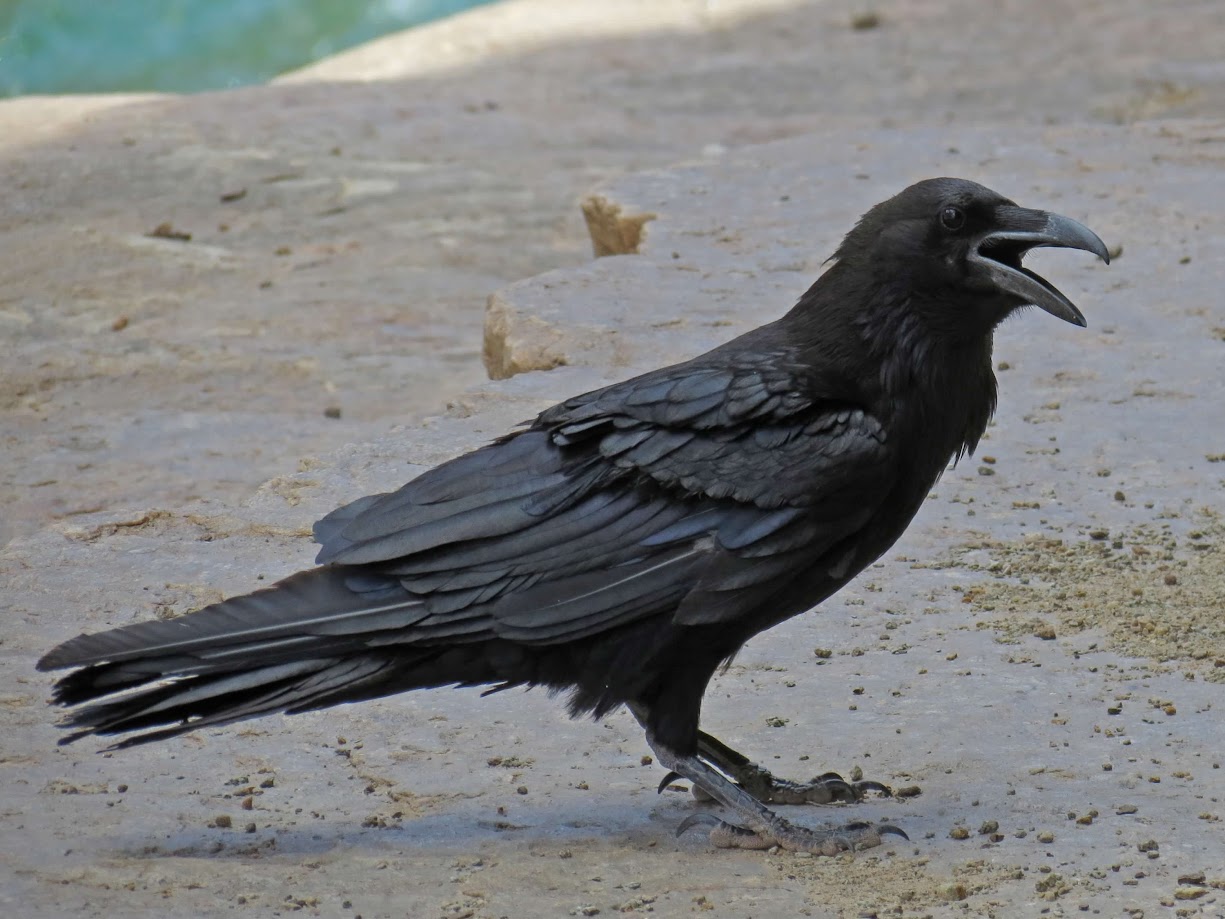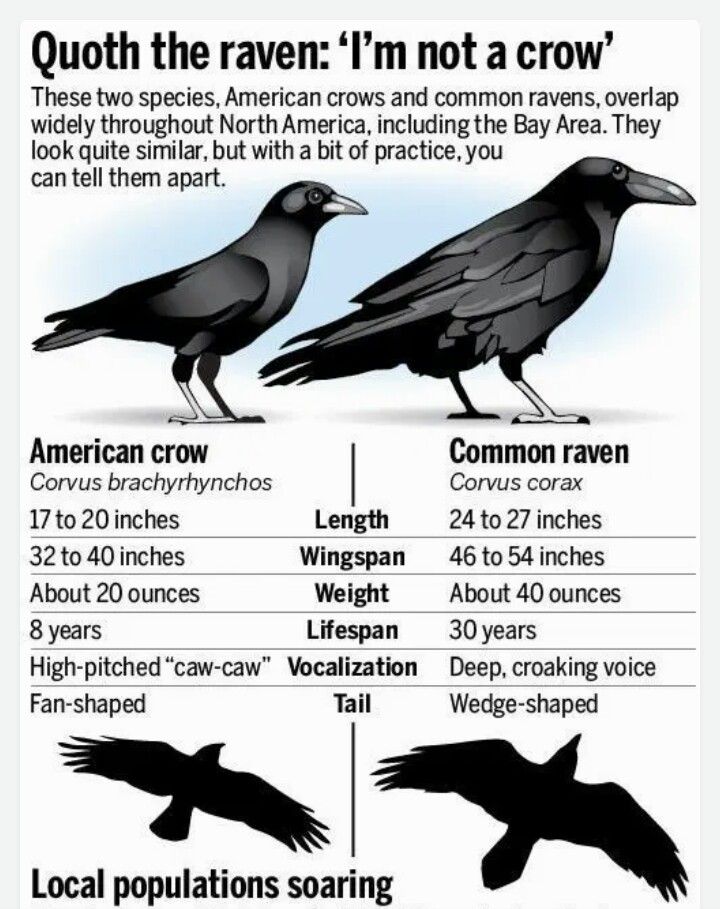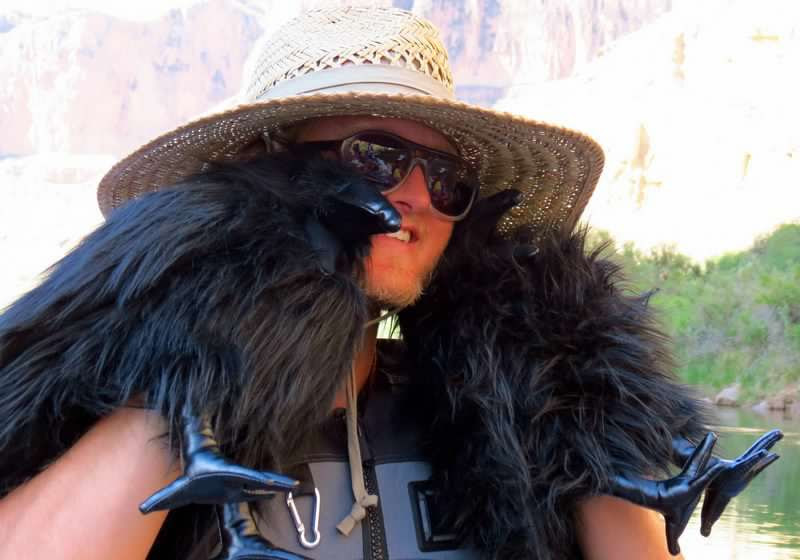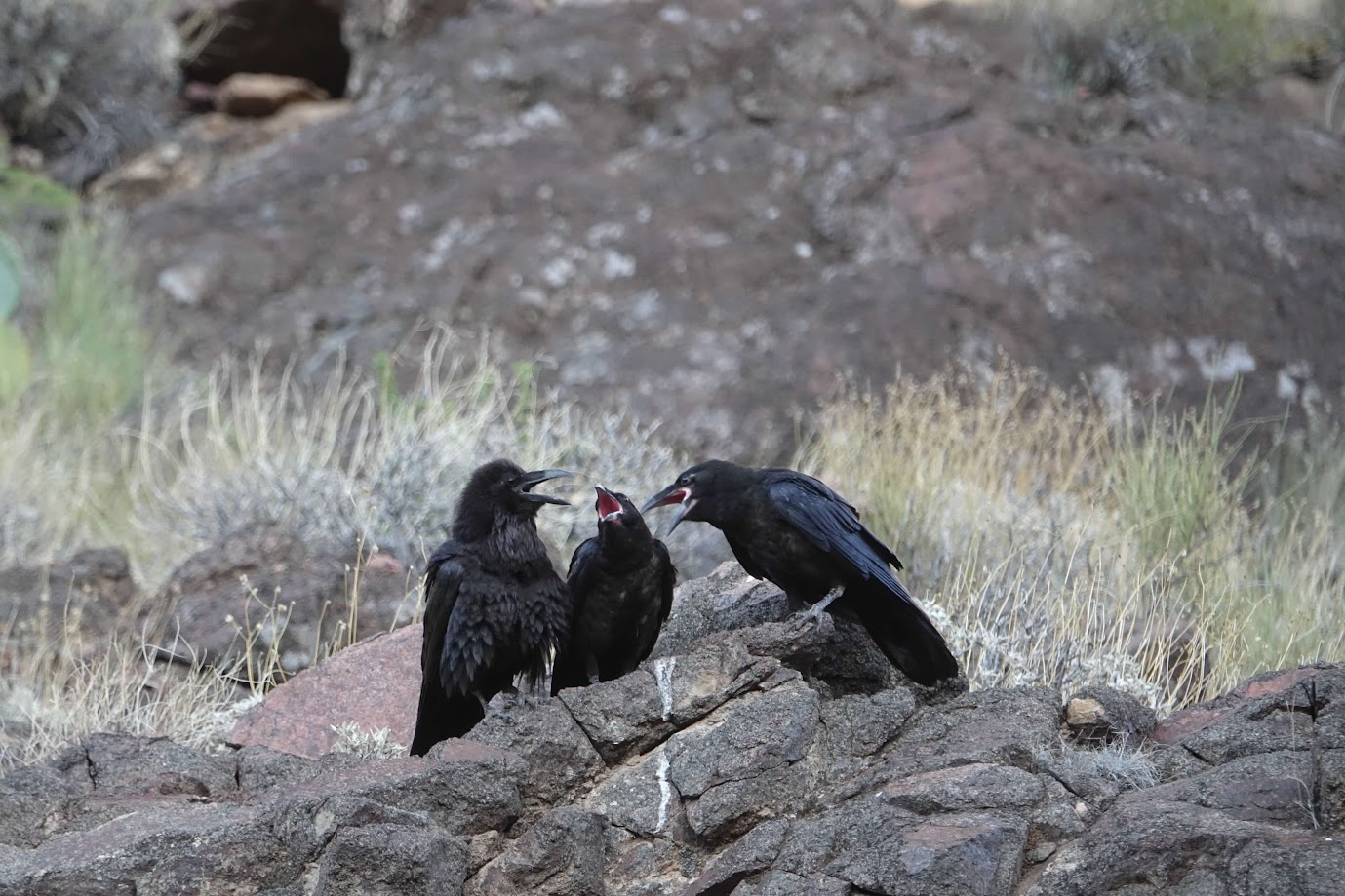The GCE Animal Series Presents: The Common Raven
Corvus Corax

The pesky scavengers of the Canyon world; the Common Raven is smart, curious, and confident. You can often see them on the beach as you leave camp, or leave your lunch spot. They will patrol the beach, looking for any hint of crumbs, snacks, or garbage left behind to eat.
Most Ravens like to live in open forests, or in trees near places where humans live. In the Grand Canyon, they live along the canyon rims so they have easier access to beaches.
Although they can be annoying scavengers, it’s always fun to watch their behavior when you see them on a river trip. We’ve even seen them open the zipper on a backpack to find some good snacks.
Identification
- Completely black coloration
- Wingspan: 3-4 feet
- Wedge-shaped tail
- Buoyant, graceful, and acrobatic in flight
- Long, curved beak
What’s the difference between a Raven and Crow?

pc: reddit r/corvids
Raven Behavior
- Aren’t social – they usually work alone or in mated pairs
- Confident and inquisitive.
- Smart! They engage in play, sometimes with other animals. (in some parts of the world, they will befriend wolves and play catch me if you can)
- Their relationships can be quarrelsome, but they are dedicated to their family.
- Display problem-solving skills (and have been known to open zippers on backpacks!)
- They like to play around – especially as juveniles. They are also attracted to shiny objects.

Captain Glade often displays fake ravens on his boat, in hopes that the real ravens will stay away!

Diet
- Generally forages in pairs
- Sometimes scavenge for food
- Eat eggs, carrion, garbage, and young birds
- Omnivores
- Will also eat insects, rodents, lizards, and frogs.

Reproduction
- They generally lay 4 to 6 eggs
- The eggs have an 18-21 day incubation time (by female)
- Male feeds female during incubation
- Both parents feed chicks
- Chicks leave the nest at 5-6 weeks old
- Ravens are typically monogamous and mate for life.
While on your river trip, keep an eye out for your gear and the beaches for microtrash. Ravens will oftentimes scavenge whatever they can, but it’s better that they don’t get any microtrash in their systems.
For more information on various animals of the canyon, visit our GCE animals series by clicking here.
Credit for the Raven/Crow infographic can be found here.

